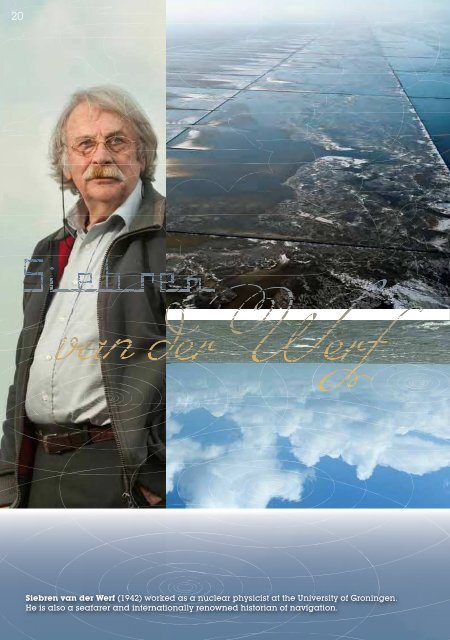IN THE MORE THAN - Historische Uitgeverij
IN THE MORE THAN - Historische Uitgeverij
IN THE MORE THAN - Historische Uitgeverij
Create successful ePaper yourself
Turn your PDF publications into a flip-book with our unique Google optimized e-Paper software.
20<br />
Siebren van der Werf (1942) worked as a nuclear physicist at the University of Groningen.<br />
He is also a seafarer and internationally renowned historian of navigation.<br />
<strong>THE</strong> NOVAYA ZEMLYA PHENOMENON<br />
History of a Mirage<br />
T H E D U T C H A R E world-famous for their business acumen, their dauntless voyages of<br />
discovery, but also their passion for pure and scientific observation. ‘Le génie hollandais’ came<br />
to full and celebrated fruition in the seventeenth century, the Dutch Golden Age.<br />
At the end of the sixteenth century the Dutch searched for a shorter trade route to the<br />
East via the North Pole. One of the famous explorers, Willem Barents, became icebound with his<br />
ships in the sea at Novaya Zemlya.<br />
Waiting for spring, the marooned seafarers trained their eyes on the starry sky. During<br />
the winter stay of Barents and his crew on Novaya Zemlya, in 1596-1597, they saw the sun for the<br />
first time again on 24 January 1597. This was more than two weeks before expected after the polar<br />
night at their latitude of 76º: the sun was still more than five degrees under the horizon. That<br />
it was nevertheless seen – as we understand with hindsight – was caused by a long-distance<br />
mirage. The diary of Gerrit de Veer, one of Barents’ sailors, gives the first documentation of this<br />
phenomenon, which has since become known as the Novaya Zemlya effect.<br />
De Veer’s unusual account was immediately studied by cartographers and physicists<br />
across Europe. As early as 1604 the famous Johannes Kepler was inspired to offer a visionary<br />
explanation: somewhere over our heads the sky ends and the ether begins. Light, however, can<br />
be reflected, as on the inside of glass. Thus the Dutch on Novaya Zemlya did not see the sun<br />
itself, but its reflection. In Het Nova Zembla<br />
verschijnsel (The Novaya Zemlya Phenomenon)<br />
Siebren van de Werf shows how<br />
this explanation has stood the test of time,<br />
though Kepler’s ethereal reflection must be<br />
replaced by a mirage.<br />
By means of computer simulations van<br />
der Werf has calculated for the first time in<br />
history that Gerrit de Veer’s sixteenth-century<br />
observation was correct. With the help<br />
of copious illustrations, photos and figures<br />
van der Werf convincingly argues that this<br />
historical observation of a mirage, of the<br />
birth of the Novaya Zemlya effect, is sound<br />
from a modern scientific perspective.<br />
Van der Werf’s Het Nova Zembla Verschijnsel<br />
is a plea for attentiveness, scientific<br />
precision and historical passion.<br />
Publishing details<br />
Siebren van der Werf<br />
Het Nova Zembla<br />
verschijnsel<br />
Geschiedenis van een<br />
luchtspiegeling<br />
ISBN 978-90-6554-085-0<br />
165 pp., with 60 (colour &<br />
black and white) illustrations<br />
1,000 copies sold<br />
English translation<br />
available<br />
21




